Moreton In Marsh is a pretty market town in the north Gloucestershire Cotswolds. The chocolate box houses here are built mainly of the honey-coloured stone quarried from the local area.
The name is said to derive from the old English Moreton for a farm on the moor and ‘in Marsh’ possibly from henne and mersh, from a marsh used by birds.
The town is also occasionally and interchangeably referred to as Moreton in the Marsh or sometimes Moreton on Marsh, Moreton on the Marsh and other variations on the same theme.
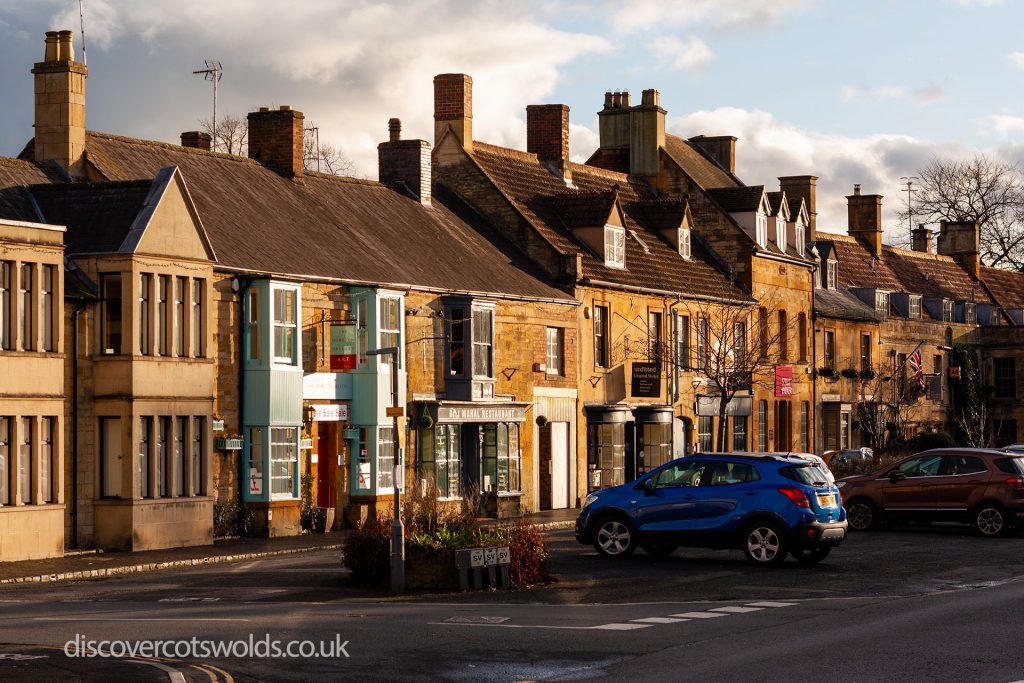
History of Moreton in Marsh
The broad High Street has the Fosse Way, a major Roman road from the south coast to Lincoln, lying beneath the modern surface.
There is evidence of settlements here dating back to Iron Age times. The town itself dates back over a thousand years to Saxon times. Nowadays this small market town nestled at the head of the Evenlode Valley, has a population of around 4000 inhabitants.

Moreton-in-Marsh was also well placed for the old coaching route from London to Worcester and the town became a popular stopping place for stagecoaches, hence several coaching inns that still exist in the thriving market town, which was given its Saxon Charter over 1000 years ago when it was part of the region known as Mercia.
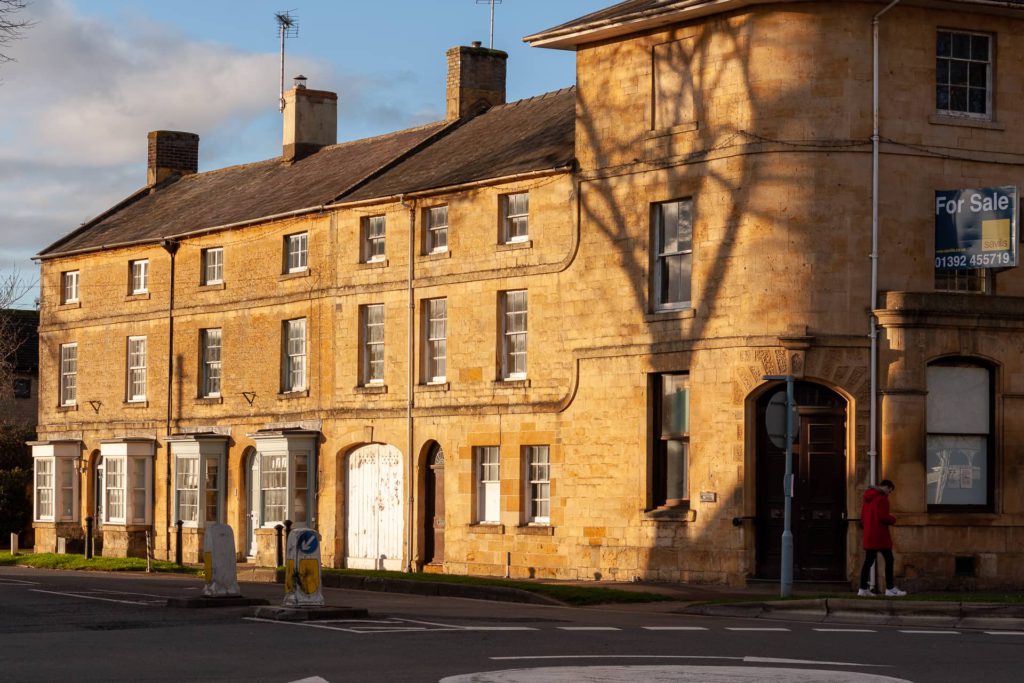
The Four Shire Stone located about two miles out of the town marks the old meeting point of four counties, Gloucestershire, Warwickshire, Worcestershire and Oxfordshire.
This is also possibly the inspiration for the Three Farthing Stone in J R R Tolkein’s the Hobbit. It’s also said that the Bell Inn provided the inspiration for the Prancing Pony, Middle Earth’s most famous pub, in his books.
Moreton-in-Marsh was granted a market charter in 1227 and the weekly street market still takes place each and every Tuesday. Like many of the towns and villages in the Cotswolds wool and cloth making was the source of income during the medieval years thus many of the buildings along the main street date back to the 17th and 18th centuries.
Buildings of interest
There are several buildings of architectural interest dating back to the 17th and 18th century including The White Hart Royal Hotel, a former manor house where King Charles I is reputed to have stayed during the English Civil War. Legend has it that he left without paying his bill.
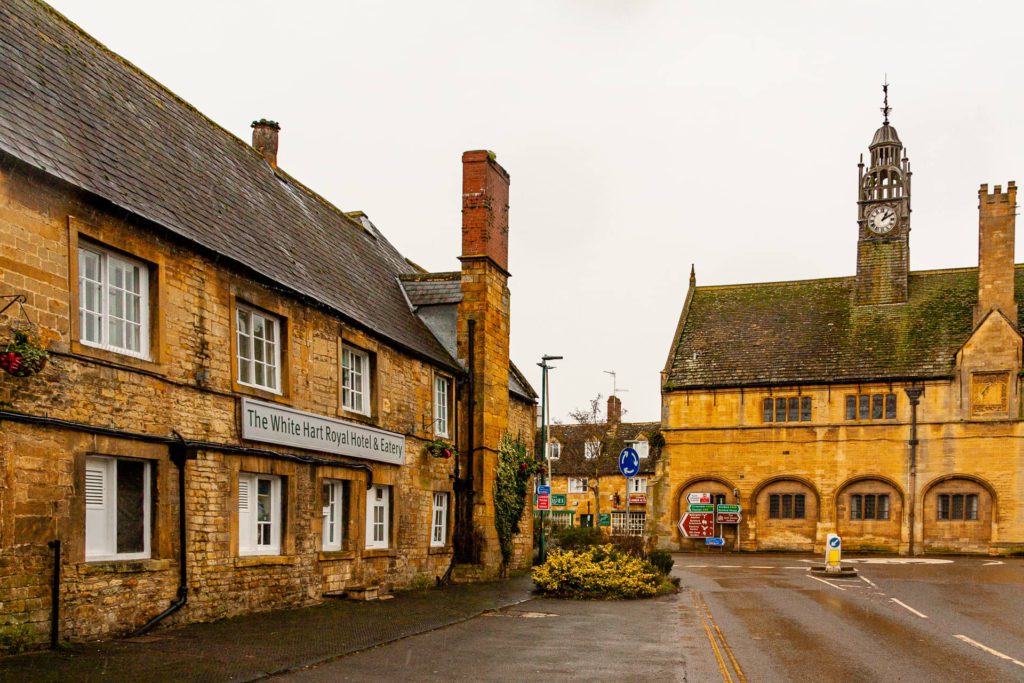
It still exists to this day as one of a number of places to stay in the town.
Other notable buildings include the Market Hall built by the Redesdales from nearby Batsford House, the Curfew Tower on the junction of High Street and Oxford Street and St David’s Church.
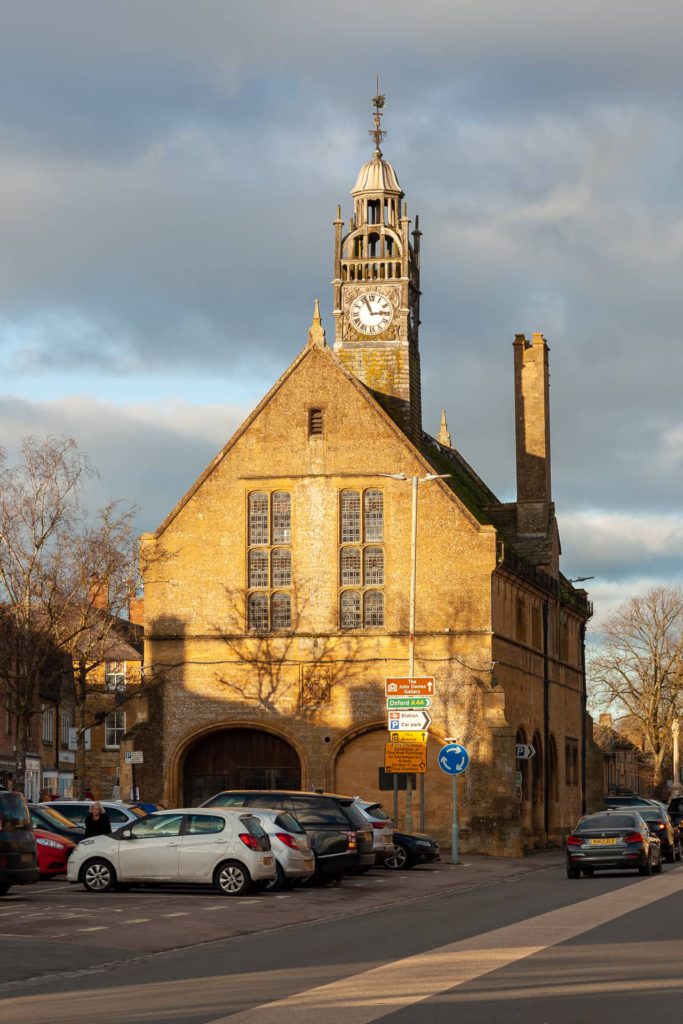
The Curfew Tower dates back to the 17th century and still contains the original bell from 1633 that used to ring out daily until 1860.
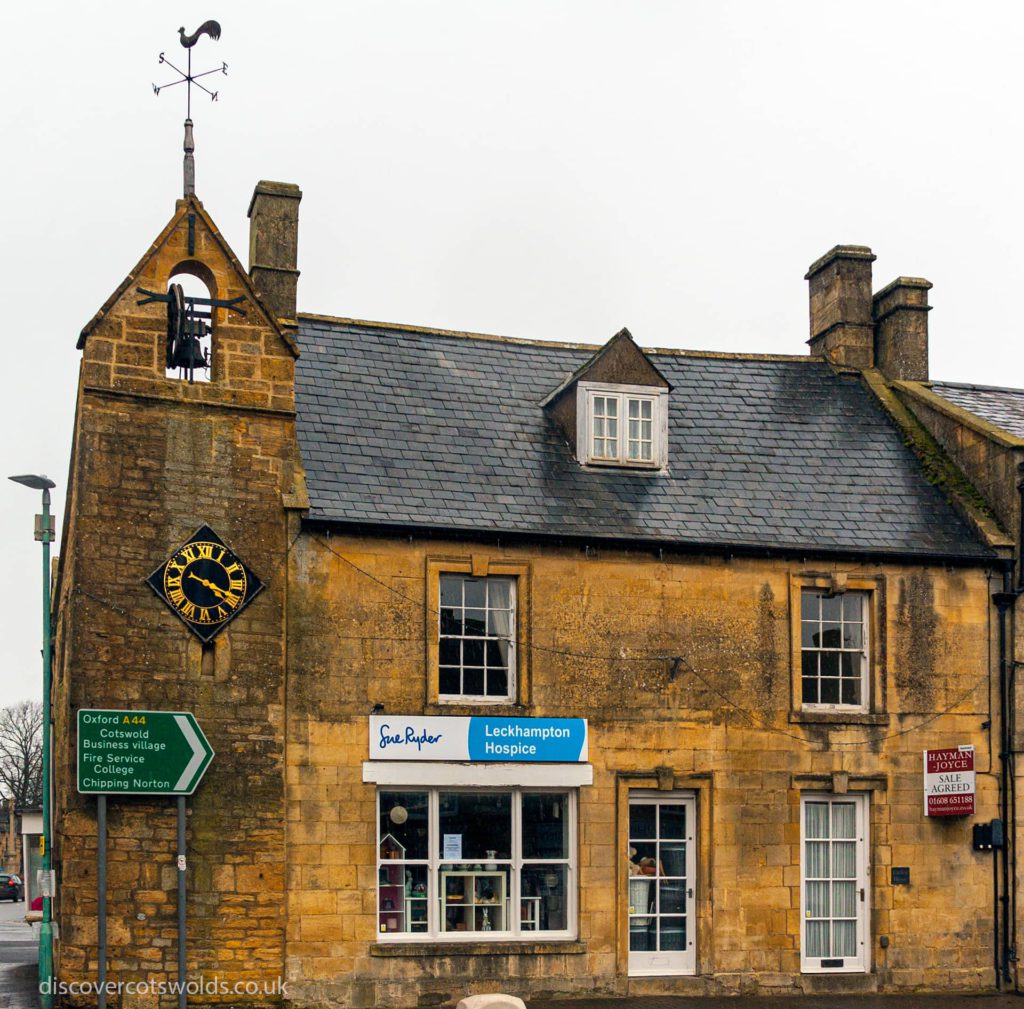
The modern town has a good selection of small independent shops, with no famous brand names or large high street chains – tea rooms, restaurants, antiques shops and art galleries all stretch along the town’s High Street and in the small shopping arcade.
Hotels and accommodation
There are also numerous hotels and places to stay in the town, many of them dotted along the high street, including
- the White Hart Royal
- Redesdale Arms
- Manor House Hotel
- the Bell Inn
To name but a few, offering a selection of accommodation with free wifi, free parking, family rooms, private bathrooms and flat screen TVs. Find out more about these on our separate places to stay in Moreton in Marsh page.
If you’re looking for something different then the Caravan club also have a camping and caravan site just on the edge of town, in the direction of Bourton on the Hill.
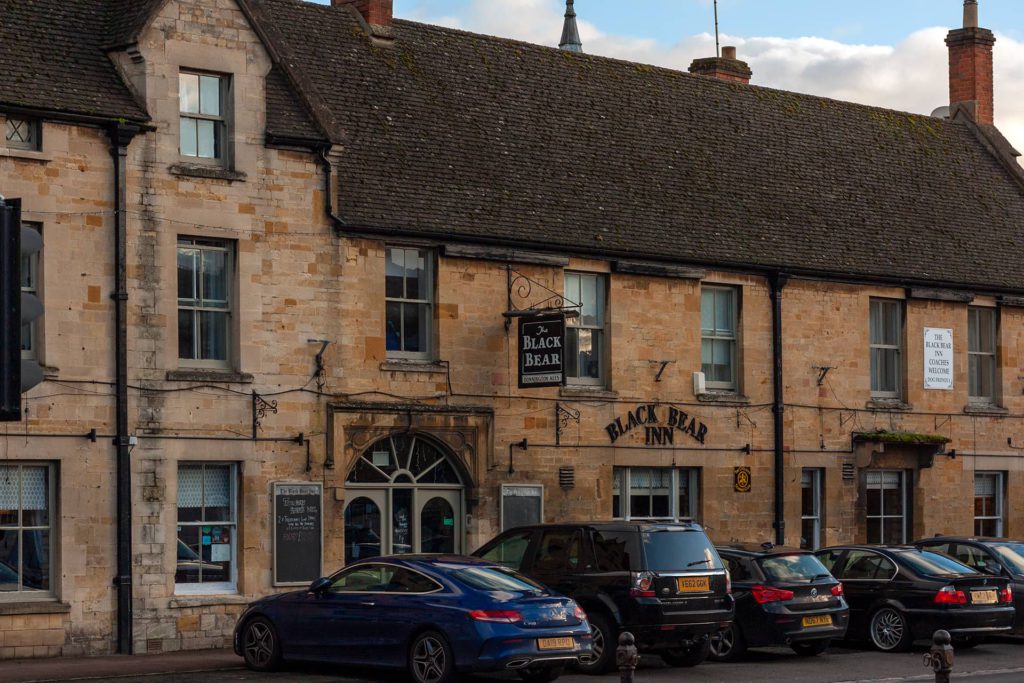
Where is Moreton in Marsh?
Moreton-in-Marsh is situated the head of the Evenlode valley on the Fosse Way.
It’s on the junction of the A429 (Fosse Way), which will take you all the way from Cirencester to Moreton in Marsh via Stow on the Wold and the A44, running between Chipping Norton and Broadway – a natural crossing point between these two routes through the Cotswolds.
You can also get here by rail, arriving in the town at Moreton in Marsh train station, which is on the Cotswolds line, lying between the stations of Kingham and Honeybourne and currently serviced by Great Western Trains.
Public Conveniences
There are public conveniences next to the Market Hall – make sure that you have some change on you, as there is a charge (currently 40p) to use them.
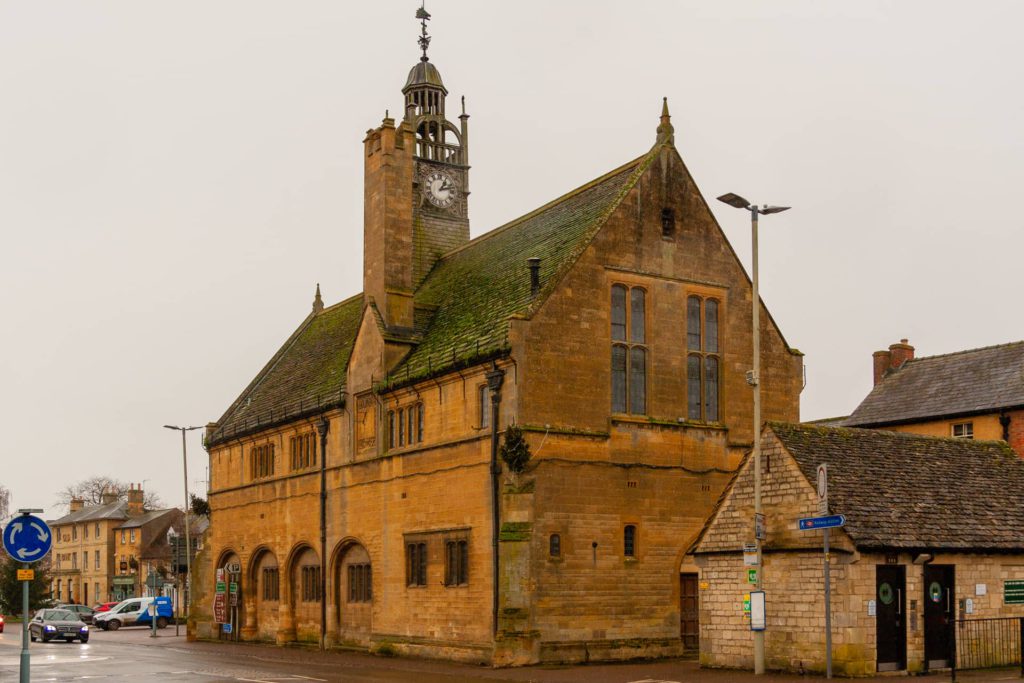
Parking
There is plenty of free parking along the length of Moreton in Marsh high street. However, it’s worth noting that every Tuesday, the town holds the largest open air street market in the Cotswolds, which is always a popular event.
Aviation History
The Wellington Aviation and Art Museum is a haven for enthusiasts of World War II memorabilia including paintings, prints, models and aircraft history, with the proceeds going to the RAF Benevolent Fund.
The museum records the history of RAF Moreton-in-Marsh; a flight training station for RAF Bomber Command during the Second World War and over recent years has become the Gloucestershire Fire Brigades training headquarters.
There are also lots of other things to do in and around Moreton in Marsh.
For example
- Batsford Arboretum is just down the road, between Moreton in Marsh and Bourton on the Hill. Originally started by Lord Redesdale it is one of the largest private collections of trees in the country
- the Cotswold Falconry centre, is also very close by, on the road to Batsford
Moreton in Marsh Show
Every year (2020 notwithstanding, due to the Coronavirus), on the first Saturday in September, Moreton in Marsh holds its annual country show. A one day agricultural show that attracts visitors from miles around, the show has been held on the same site since it first started in 1949.